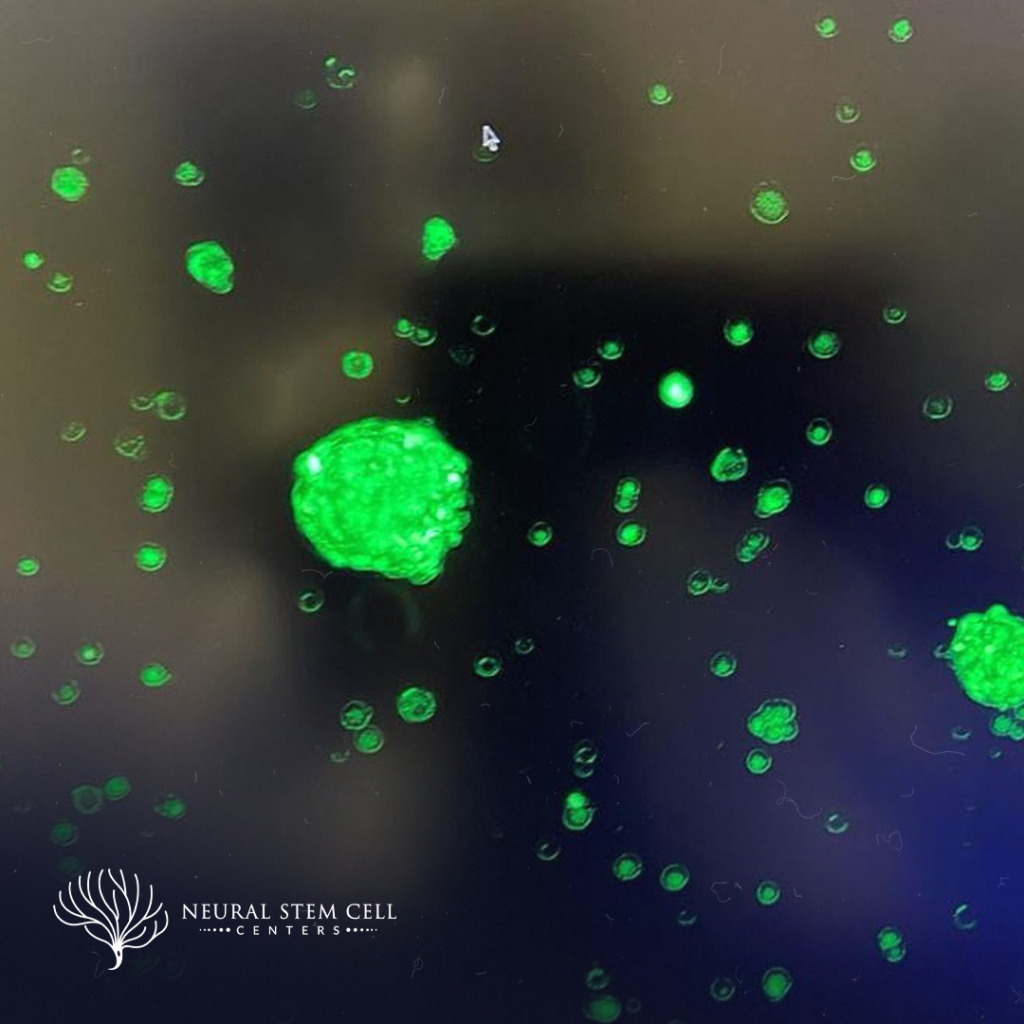Neural Stem Cells

What are Neural Stem Cells (NSC's) ?
Neural Stem Cells are the building blocks of the nervous
system from the spine to the brain. They generate neurons, oligodendrocytes,
astrocytes, microglia and Schwann cells in a regional and developmental stage-
appropriate manner throughout life. NSC’s are able to self-renew and proliferate.
They are the foundations of all brain cells.
What causes NSC's functionality to slow down, decrease or be damaged?
Why are NSC's so important?
NSC’s play an important role in plasticity, aging, disease, and regeneration of the nervous system in the early development stage and throughout life.During early development, NSC’s proliferate, migrate and differentiate during embryogenesis into mature neurons that will eventually form the central nervous system. New functional neurons are generated from NSC’s throughout life, which is required for brain homeostasis, the portion of the brain that maintains the body’s internal balance. It is also implicated in learning, memory and affective behaviors. Furthermore, NSC’s continuously supply nutrients to the newborn neurons, and behave as a functional niche for them to regulate their maturation, which is vital in order for the whole nervous system to function properly.

How is replenishing NSC's going to benefit my body and health?
Imagine the human body as a factory, and the central nervous system (CNS), brain and spine, is the command center for the factory. In the perfect world, excluding all risk factors, aging is the only inevitable, natural cause for NSC’s to continuously decrease. Although they are able to self-renew and proliferate , in healthy adult mammals, neurogenesis occurs at a very limited rate, and unfortunately the rate of apoptosis (cell death) is much faster than their rate of self-renew and proliferation.
As the progenitor cells for all neuronal derived cells, the very foundation of all neurons and brain cells are NSC’s. The are the fuels, the parts and the workers in the command center. When it is disrupted and damaged, there could be many different scenarios from some of the parts missing, to workers being attacked or fuels ran out, regardless of the situations, the factory will malfunction with the command center falling apart as is common in neurodegenerative diseases. .
If one had a medical incident, for example physical injuries, stroke, or a disease or disorder is developed and leads to traumas and damages to the central nervous system, even though our body naturally and instinctively attempts to repair neurological damage from major events, unfortunately endogenous neurogenesis does not supply enough cells to achieve what needs to be done, and newly formed cells may not fully integrate into the neuronal network in damaged brain/CNS. (CNS) refers to both traumatic brain injury (TBI) as well as traumatic spinal cord injury (SCI). Both types of injuries substantially contribute to morbidity and mortality in developed as well as developing countries.
For example, ALS (Amyotrophic Lateral Sclerosis), Alzheimer’s disease and Huntington’s, share similar and significant pathological characteristics. ALS,characterized by the degeneration and loss of motor neurons in different part of the brain; Alzheimer disease (AD) is characterized by the degeneration and loss of neurons and synapses throughout the brain; and Huntington’s, a rare, inherited disease that causes the progressive breakdown (degeneration) of nerve cells in the brain.
With the ability to naturally migrate to areas of injury and neurodegeneration, not only is replenishing NSC’s a promising solution for brain and body anti-aging, but also a preventive measure for those who have family history of neurodegenerative disorders. transplantation of exogenous NSCs also aid endogenous neural progenitors, which could be an effective therapy to repair CNS damage from trauma or disease.

